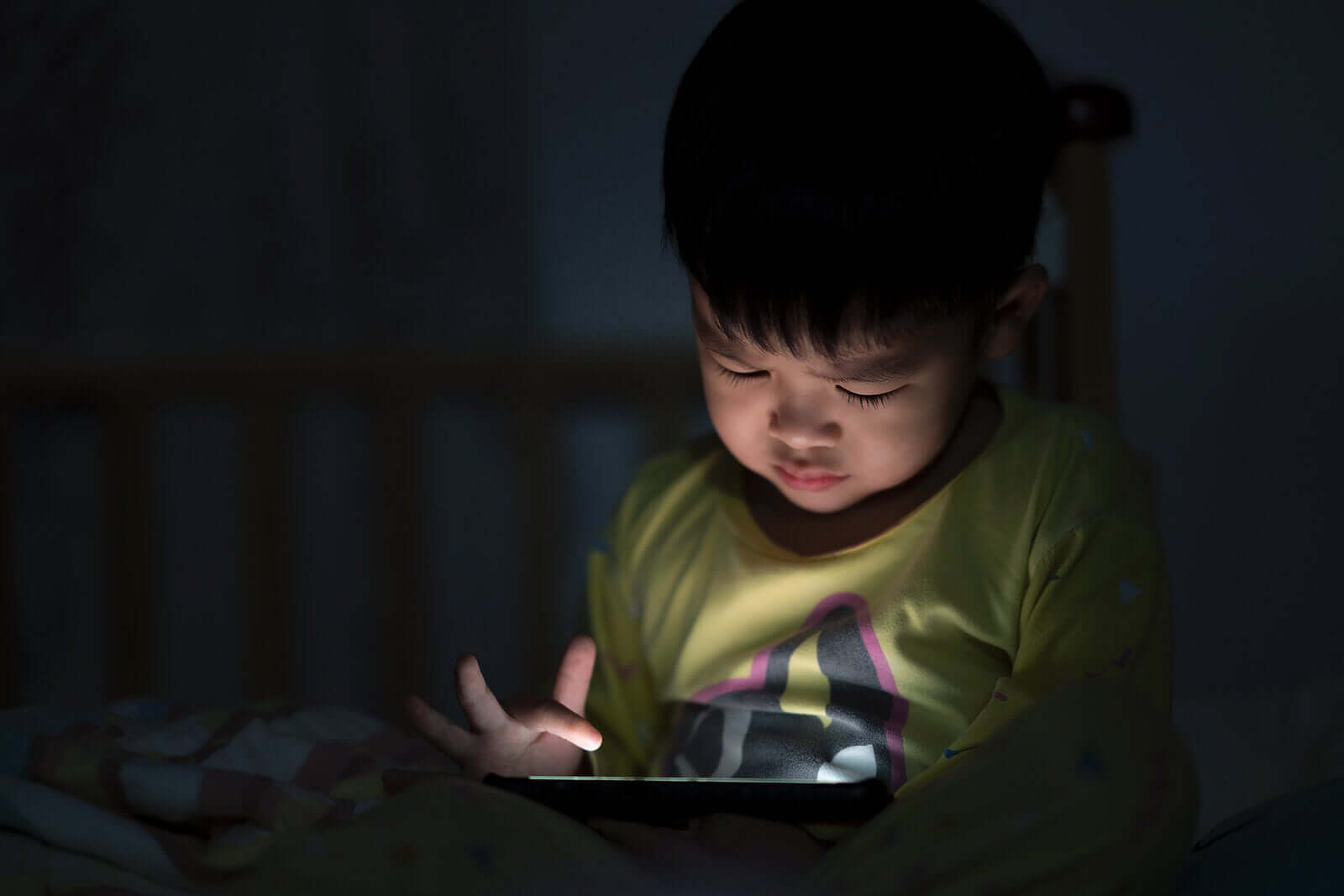9 Keys to Digital Disconnection in Children

Many children have increased their use of electronic devices: cell phone, computer, video console, tablet, etc. This is largely due to the difficult situation we’ve been experiencing since March. Understandably, this worries many parents. That’s why, in this article, we’re going to look at some keys to digital disconnection in children.
The internet, used rationally, is a very useful tool for studying, and consulting information. At the same time, it’s the way we communicate with family or friends who live far away or that we can’t see.
The problem is that an abuse of these devices can lead to negative consequences on children’s mood, as well as emotional and physical health.
Keys to digital disconnection in children
We all know that technology has been responsible for bringing us closer in moments when we haven’t been able to see family and friends. Electronic screens became the only window to the outside world.
What’s more, now many children must continue using them, since they can’t go to class in person and have to attend school through video calls.

As parents, we must manage their proper use and establish a series of rules to ensure safety while surfing the internet, among other things. So, let’s look at some keys so that this doesn’t end up being a source of stress for our daily lives.
Playing with our children
We must spend some time playing with our children every day. We can use board games, puzzles, role-playing games in which we each act as different characters, etc. Basically, anything that encourages our children’s creativity and imagination.
The time we dedicate to playing with our children can become the best time of day for them. After all, children love to play with their parents.
Involving children in household chores
One way to get children away from screens is to give them some age-appropriate, ability-appropriate, developmentally-appropriate household tasks. For example, picking up their room, setting the table, helping to prepare a cake, or some other chore they can participate in.
In this way, children learn to be responsible and it makes them feel important. They feel they’re helping out at home and, at least during that period of time, they’ll be away from the screens.
Promote reading for digital disconnection in children
Every day, you should dedicate a little time to reading a story together. This will help your child develop a greater interest in reading.
If your family has several members, you can organize a reading club and talk together about some of the books you’ve all read. This, of course, is an especially good idea if you have children who already know how to read.
Setting up a place to use electronic devices
Establish a rule that children can only use electronic devices in common areas of your home, such as the living room or dining room. What’s more, they can only use them when you’re nearby. If they use them alone, they can easily become disconnected from reality. And, what’s more, they could run into danger while on the internet.
Establish parental control on the devices they use
You shouldn’t leave any device that has internet access within reach without having established parental control. It’s very important that you’re present and have established this control for security reasons if your child uses the internet.
Always choose content adapted to the child’s age
When little ones access a film or series, you must always ensure that it’s suitable for their age. Content that isn’t suitable for their age can cause them problems because they’re not psychologically ready for it.
Therefore, as much as possible, try to share some activity with them each day, (streaming movies or series, playing a game, etc.).
More keys to digital disconnection in children

Having a conversation with children and talking to them
We must talk to our children and tell them how important it is to have time for everything – that is, doing their homework on time and respecting the limits you’re going to set with the use of the devices.
We always have to adapt our conversation to our children’s age and understanding. Remember to be constant and consistent with the limits and rules you set.
Accepting resistance
If it’s difficult for adults to limit the time we spend using digital content, it’s even more difficult for children, whose minds are still immature and easy to captivate. We have to be understanding and give them time to assimilate and accept the changes.
Set an example for your children regarding digital disconnection
This may be one of the keys that’s most difficult for parents. Who hasn’t taken advantage of mealtime or while your children are playing to look at your phone?
This is something we need to avoid. If you don’t do it, all the effort you make regarding the above advice will be worthless. That’s because children are more receptive to our example than to our instructions.
In short, it’s important that you carry out these keys to successful digital disconnection in children. You mustn’t forget that by progressively reducing the use of electronic devices, you’ll be protecting your children from disorders such as anxiety or depression, produced by an excess use of screens.
At the same time, you’ll be contributing to better rest and a more active lifestyle, not to mention you’ll be protecting their eyesight in the long term.
All cited sources were thoroughly reviewed by our team to ensure their quality, reliability, currency, and validity. The bibliography of this article was considered reliable and of academic or scientific accuracy.
- PASTOR, Y., & MONTES-VOZMEDIANO, M. A. N. U. E. L. INFANCIA, RIESGOS EN INTERNET Y VULNERABILIDADES DIGITALES.
- Vélez, A. P., & Fraile, M. N. (2019). Hábitos de uso de Internet en niños y niñas de 8 a 12 años: un estudio descriptivo. Hamut´ ay, 6(2), 55-68.
- Villadangos, S. M., & Labrador, F. J. (2009). Menores y nuevas tecnologías (NT):¿ uso o abuso. Anuario de Psicología Clínica y de la Salud, 5(1), 75-83.